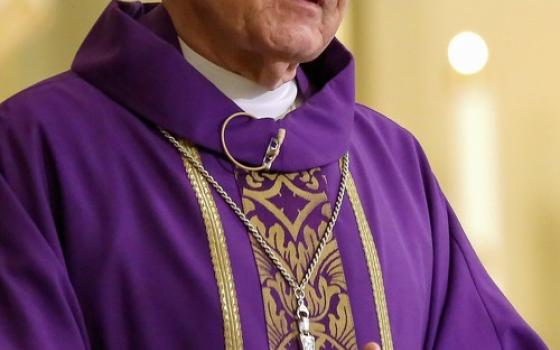By JOHN L. ALLEN JR.
New York
Assuming God is indeed just, a choice piece of real estate in Heaven has already been set aside for Paulist Fr. Ron Roberson of the Secretariat for Ecumenical and Interreligious Affairs at the United States Conference of Catholic Bishops. I say this not because Roberson is a nice guy, though that’s certainly true. But what I have in mind instead is that every month, gratis and without fanfare, Roberson puts out the “SEIA Newsletter on the Eastern Churches and Ecumenism.”
The newsletter is an invaluable resource for keeping track of Eastern Christianity. Roberson scours news agencies, wire services, communications offices of the different churches, and a wide variety of other resources, often translating material from original languages into English. Anyone concerned about global Christianity is in Roberson’s debt for collecting material you often can’t find anywhere else.
The January 31, 2007, issue is a classic case in point, splashing some cold water on hopes for détente between East and West following Pope Benedict XVI’s visit to Patriarch Bartholomew I of Constantinople last November, as well as the pope’s mid-December meeting in Rome with Archbishop Christodoulos of Athens.
The newsletter opens with a Dec. 30 statement from representatives and superiors of the twenty Orthodox monasteries located on Mount Athos, a Greek peninsula and mountain which is home to a semi-autonomous monastic republic. The monks of Mt. Athos see themselves as the keeper of the Orthodox flame, Eastern Christianity’s last line of defense. They have considerable influence in shaping debate within Orthodoxy, even across the lines of the various national churches.
For the most part, the monks were not impressed with Benedict’s encounters with Bartholomew and Christodoulos.
In fact, the statement said the two events “brought immense sorrow to our hearts.” They “may have secured certain worldly benefits,” it asserted, but they also risked creating damaging confusion among the Orthodox faithful.
For one thing, “the pope was received as though he were a canonical bishop of Rome,” when in fact, according to the monks, only Orthodox prelates carry legitimate episcopal authority. Moreover, they asserted, use of the term “Sister Churches” in the context of Orthodox/Catholic relations, as happened in Benedict’s session with Bartholomew, is illegitimate.
“‘Sister churches’ are only the local Orthodox Churches sharing the same faith,” the statement said. “No other reference to ‘sister churches’ … is theologically possible.”
The monks also complained that Bartholomew rolled out the red carpet without insisting that Rome “recant its heretical teachings and policy.” As exampled, the statement cited:
•tUniatism, referring to Eastern Rite churches which grew out of Orthodoxy, but which are in full communion with Rome
•tThe Filioque
•tPapal primacy
•tPapal infallibility
•tThe dogma of the Immaculate Conception
•tInter-faith common prayers “and the pan-religious hegemony of the pope of Rome that follows from that”
Interestingly, the monks treated Benedict’s recent decision to set aside the title “Patriarch of the West” as a further assertion of his primacy. While the Vatican tried to present the move in an ecumenically positive light, many Orthodox suspected the pope was in fact claiming universal primacy over Christianity, not merely in the West.
On a cultural level, the monks expressed alarm that these recent encounters between the pope and Orthodox prelates might obscure what they see as the deep gap separating the West from the East. They pointed to a series of “anti-Christian institutions and acts” which they regard as characteristic of the West, including the Crusades, the Inquisition, the slave trade and colonialism. All, the monks asserted, “are the consequence of Rome’s theological deviation from Orthodoxy.”
In that light, the monks see Catholicism and Protestantism as fruit from the same poisonous tree.
“Step by step,” the monks said, “Papal and Protestant heresies gradually replaced the humble Christ of Orthodoxy and enthroned proud Man instead.”
Thus Orthodoxy, the monks say, “is the only authentic faith in Christ, and the only hope for the peoples of Europe.”
For that reason, the monks conclude that the meetings involving Benedict, Bartholomew and Christodoulos were dangerous, because they may “create false impressions of unity, and thus turn away the heterodox who could have seen in Orthodoxy the true church.” Even worse, they could “blunt the dogmatic sensor of many Orthodox.”
Whatever one makes of its theological and cultural claims, the statement illustrates at least three important points.
First, it’s a reminder that those Orthodox clergy, theologians and laity who take part in dialogues with Roman Catholicism, whether formally or informally, often do so at the risk of censure from important constituencies within their own tradition. There’s a price to be paid, in other words, just for sitting at the table. That’s an important bit of perspective to bear in mind when the talks get heated, or teeter on the brink of collapse.
Second, the same point applies to Orthodox prelates such as Bartholomew, Christodoulos, and Patriarch Alexy II of Moscow, who have to balance ecumenical progress against the potential for “blow-back” within their own churches. Among other things, experts say that when such figures issue statements that seem frosty to the West, or to the Catholic Church in particular, sometimes they’re meant for domestic consumption.
Third, the statement offers an additional reminder that the road to ecumenical reunion is long and winding, and breathless accounts of breakthroughs or radical deals, with the Orthodox or with anyone else, should be taken with an industrial-sized grain of salt. Ecumenism is one of those areas of church life in which the best way to stay healthy is usually to take the long, long view.




